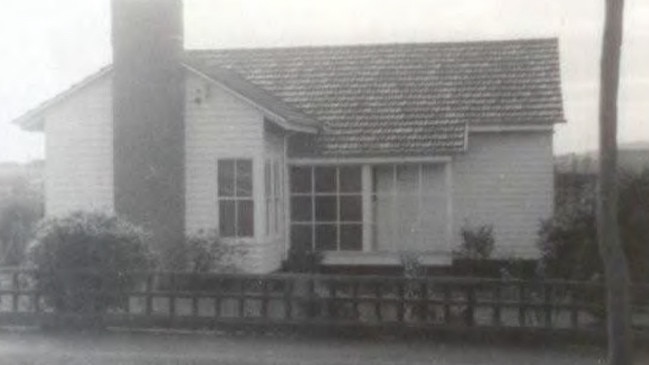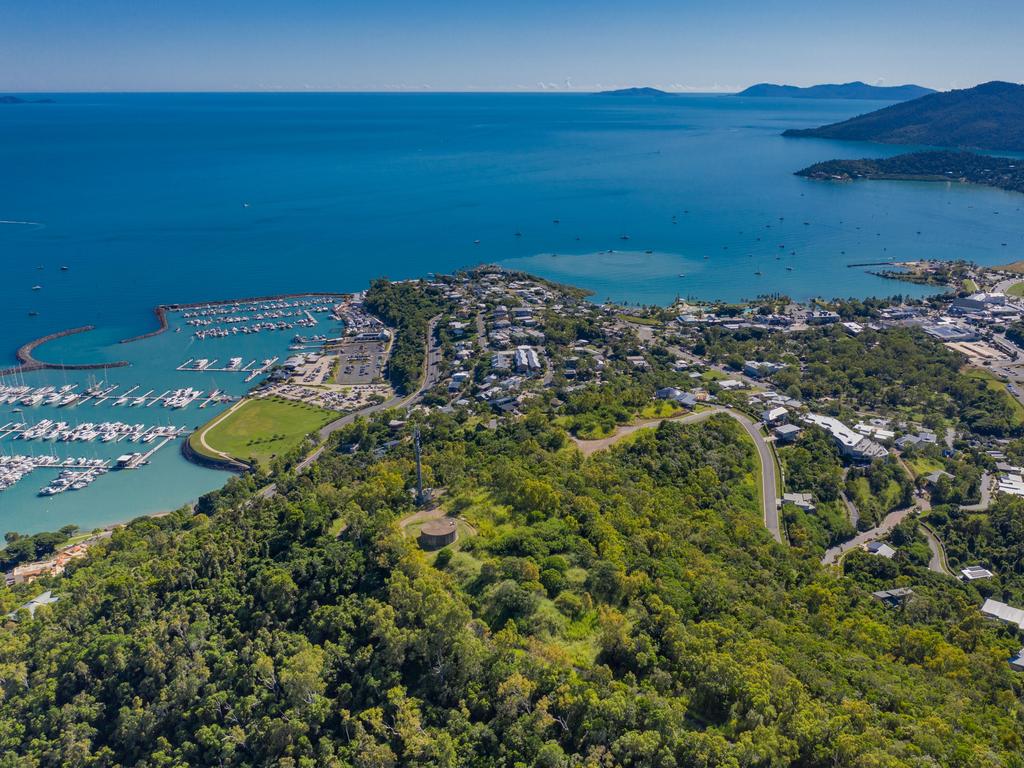
The story starts with the 1880s land boom that catapulted Melbourne to one of the largest and most important cities in the British Empire.
In the decade to 1891 Greater Melbourne’s population jumped 75 cent to 477,000. In this era of laissez faire property development land was dissected (by land boomers) into ever smaller blocks.
In one famous case at 130 Islington St in Collingwood a house was built (in the 1870s) with a mere 2.5m frontage. (This house has been restored and relocated to a site near to its original position.)
The poor, the destitute, the factory workers and their families clamoured for walking-distance proximity to Collingwood’s factory work. There was no regulation. And nor was there a reticulated sewerage system (other than night carts) or indeed a system of social welfare other than church based charities. All these essentials of modern Australian life would come later.
Half a century, two economic depressions (1892-93, 1931-32) and a bruising WWI experience later, and the worker cottages of Marvellous Melbourne’s mean streets would be the subject of a 1936 inquiry into urban living conditions. And out of which would come recommendations for the establishment of a Victorian Housing Commission charged with the responsibility of delivering public housing at scale.
House construction faltered and indeed all but stopped across the six years of WWII. After the war supply chains and workforces had to be re-established and retooled. Victorian Housing Commission estates blossomed from the late 1940s onwards in places like a former military camp at Broadmeadows as well as adjacent to the Ford car manufacturing plant in Geelong’s Norlane.
Public housing booms: A grateful nation responds
Access to social housing at this time was prioritised by a grateful nation to those who served, to returning soldiers. In many ways access to social housing mirrored the Soldier Settler (agricultural) programs following WWI and WWII. And which worked well enough for a generation, however the mostly dairy farms and orchard blocks were progressively re-aggregated (in the 1980s) as older soldier-settler farmer/growers retired to nearby towns.
Similar (public housing) bodies emerged post war to deliver social housing in other states in places such as Sydney’s Redfern, Blacktown and Campbelltown, like Brisbane’s Inala, Woodridge and Logan, and in Adelaide’s Elizabeth. Housing Commission tower blocks followed at multiple sites across Melbourne in the 1960s in a program popularly known as “slum clearance”.
The Victorian Housing Commission even delivered social housing in country towns such as Terang (population 2000), in western Victoria, from 1949 onwards – where my family lived. I estimate that 30 houses were built in a town with, say, 800 dwellings. It was a sufficient number to have a critical mass and a social identity of “working-class” families.

Social housing at this scale was designed to be “affordable” and as a consequence dwellings were weatherboard-clad, or cement-sheet-clad and had either corrugated iron or terracotta tile roofs.
Typically these social houses comprised three-bedrooms, one bathroom, a kitchen, a loungeroom and three co-joined outhouses namely a laundry (called a wash house with a copper and a mangle), a woodshed and a lavatory. (The lavatory transitioned into a toilet when it moved inside the house as the sewerage system “went through”.)
This iteration of social housing was delivered by the Victorian Housing Commission on generously-scaled blocks of a quarter-acre or 1000 sqm allowing for a vegie garden and a chook shed. (It was sufficient space to support a kind of subsistence urban lifestyle.)
These big backyards also accommodated a wood heap, an incinerator, a compost heap and enough lawn for a cricket match.
According to my parent’s account books the weekly cost of renting a post-war social-housing property in country Victoria in the (late) 1950s was £3 on a weekly wage of £15 or 20 per cent of post-tax income.
The post pandemic housing crisis
Three generations and a global pandemic later, and once again we are confronted with a post-war-scaled shortage of labour and housing and especially of affordable housing in capital cities. The pandemic and associated lockdowns slowed house construction, disrupted supply chains, pushed up building costs and prompted skilled (and other) workers (including student waiters) to return home overseas.
By May 2024 overseas students and immigrant workers have largely returned (518,000 net overseas migration in 2022-23) but the pandemic experience has severely diminished our capacity to deliver affordable housing – and especially in capital cities.
To some extent the current housing shortage will be addressed by recently announced public sector funding for social housing. While this is helpful what I think is also required is additional access to affordable housing delivered by the private sector.
And while the property industry tends to focus on median house and land values the most valuable indicator, I think, is the entry level price point for new separate (as opposed to attached) dwellings in Melbourne and Sydney. What is the cost of getting entry-level access to a 3-bedroom 2-bathroom new-build house in Melbourne, today?
I have done this research. Stockland and Fairhaven Homes offer a three-bedroom two-bathroom (separate) house on a 263 sqm block in a new residential estate at Mt Atkinson, 25km west of the CBD. According to online marketing material accessed last week a house and land product tagged Fairhaven Homes City 13 starts at $550,000 (depending on options).
Mt Atkinson is roughly the same distance west of the CBD as is Glen Waverley east of the CBD. In Sydney terms, Mt Atkinson’s $550,000 new-build separate-house product would sit at about Parramatta.
There are a number of questions that flow from this example of entry-level access to the traditional ideal of home ownership in an Australian global city.
What is the equivalent to Fairhaven Homes City 13 Mt Atkinson product in Sydney? In fact, what is the equivalent entry level product in each major city in Australia? This is a dataset that I am sure would be helpful to home buyers: an updateable list of actual entry level properties in each city.
In fact, perhaps Real Commercial could provide a monthly (or occasional) update of “best” examples submitted by developers.
Indeed I imagine developers in regional cities would be only too pleased to include their entry level price points for helpful comparison with the big city competition. For example, how does entry level housing in Dubbo, Shepparton, Roma compare with the Mt Atkinson product?
Can someone let me know (by actual cited example) the entry level price point of a new-build family home in Sydney? I want to start a bidding competition among entry level property developers.
Why do we not identify and showcase the most affordable housing in our capital cities? Surely this is something that needs to be discussed.
Surely this is something that buyers would find helpful.
I argue that today’s entry-level housing is being delivered at Mt Atkinson and possibly also in other estates in the municipalities of Melton and Wyndham.
We’ve done it before, we will do it again
Whatever version of social housing emerges from recent funding announcements this exercise shows that the cost-per-accommodation unit (including apartments) cannot be anywhere near $550,000. The cost-per-accommodation unit for social housing must be, say, $400,000 or less on current values.
The difference between entry-level affordability in Sydney and Melbourne is the reason Melbourne is growing faster than Sydney (and has been since the 2000 Olympics).
Melbourne is rebalancing. For 180 years Melbourne expanded to the east; it is only now expanding to the west infilling between Caroline Springs and Melton. No other Australian city is doing the “Melbourne flip” which is opening up developable residential land within close-commute distance to the CBD, as is the case for Mt Atkinson and other estates on Melbourne’s western flank.
We Australians are quite skilled at delivering affordable housing at scale. We do this through modular housing (dongas) at mining sites for FIFO workers. We did this during the pandemic with quarantine facilities (and which remain little used today). However these are examples of accommodation for special purpose facilities.
What we require is a version of scalable, replicable, affordable housing and/or of general accommodation that can be delivered not just within capital cities but also in regional centres desperate for workers. This especially applies to sea-change communities where workers are required in the hospitality industry.
We need bold thinking in resolving our post-pandemic housing crisis. The public housing authorities of the 1940s and 1950s envisioned a type of accommodation that had not previously existed in Australia. We need to do the same in the 2020s. Expecting workers in coastal and other communities to make-do in camping grounds or worse, living rough, is not a solution, it is an abrogation of responsibility. The property industry needs to work together with planners to come up with options for accommodation that may not suit every high-minded ideal but which nevertheless delivers accommodation at scale, at an acceptable, workable, price point. And that can be delivered in Sydney, in Melbourne as well as in Dubbo and Byron Bay.
We found and we delivered a solution to the post-war housing crisis.
We can do it again to an even higher standard of living in a model that can be, that must be, scaled up and rolled out across the Australian continent. Or at least that’s the challenge.
Bernard Salt is founder and executive director of The Demographics Group








Come with me on a journey through the story of social and affordable housing in Australia over 150 years. And to the lessons that this perspective offers in helping address the shortage of, and the rising cost of, housing today. Here is a story that has been shaped by gold, land speculation, war and the demographic consequences of a global pandemic.